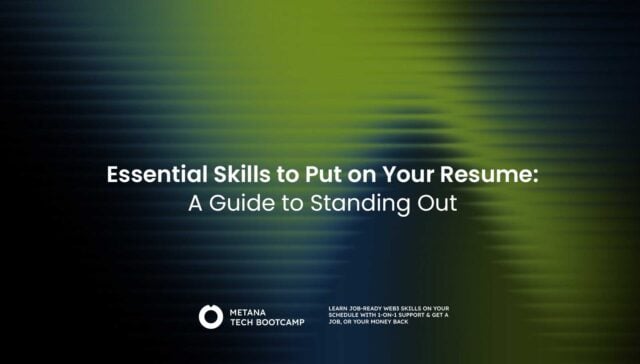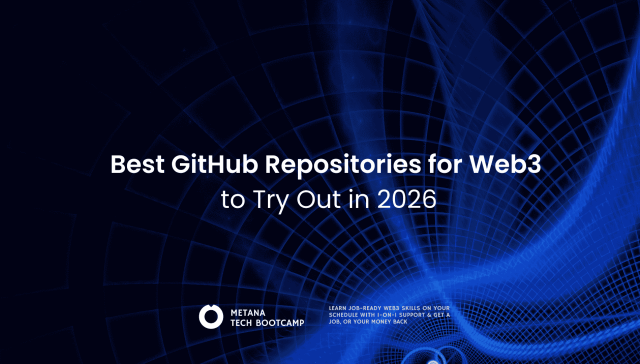What is Web Development?
Web development is the process of building and maintaining websites and web applications that run in internet browsers. It’s like digital construction—you’re creating interactive spaces where people work, shop, learn, and connect.
Web development involves three main areas:
Frontend Development creates what users see and interact with. This includes layouts, buttons, forms, animations, and responsive design that works across devices. Frontend developers use languages like HTML, CSS, and JavaScript to build user interfaces.
Backend Development powers what happens behind the scenes. When you submit a form or make a purchase, backend systems process your request, interact with databases, handle security, and send responses back to your browser. Backend developers work with languages like Python, Node.js, PHP, and Java.
Full-Stack Development combines both frontend and backend skills. Full-stack developers can build complete web applications from database to user interface, making them highly valuable in today’s development landscape.
As technology evolves, so do the standards of building modern websites and applications. To stay ahead in 2025, developers need to follow proven practices that ensure efficiency, scalability, and great user experiences. Below, we’ll dive into 11 web development best practices that every developer should adopt this year
1. AI-Powered Development and Smart Code Generation
Artificial intelligence isn’t replacing developers. It’s making good developers unstoppable.
Smart developers in 2025 treat AI as their coding partner, not their replacement. They use AI for rapid prototyping, bug detection, and code optimization while maintaining creative control over architecture decisions.
Implementing AI-Assisted Debugging
Traditional debugging involves hours of console.log statements and manual testing. AI-powered debugging identifies issues before they reach production.
Tools to implement immediately:
- GitHub Copilot: Real-time code suggestions and error prevention
- DeepCode: Static analysis with AI-powered vulnerability detection
- Tabnine: Context-aware autocompletion that learns your coding patterns
Pro implementation strategy:
javascript
<em>// Instead of manual error handling</em>
function processUserData(data) {
<em>// Hope nothing breaks</em>
return data.map(item => item.value);
}
<em>// AI-assisted approach with predictive error handling</em>
function processUserData(data) {
if (!Array.isArray(data)) {
throw new Error('Expected array input');
}
return data
.filter(item => item && typeof item.value !== 'undefined')
.map(item => item.value);
}[PRO TIP: Train AI tools on your existing codebase to generate suggestions that match your team’s coding style and architectural patterns.]
Automated Code Reviews and Quality Assurance
Manual code reviews catch obvious issues. AI-powered reviews catch the subtle bugs that cause 3 AM production incidents.
Implementation checklist:
- Set up automated PR analysis with AI tools
- Configure quality gates that block merges for critical issues
- Implement progressive code quality metrics
- Create AI-generated test coverage reports
The result? Teams shipping 40% fewer bugs while maintaining faster development velocity.
[CUSTOM IMAGE: Split-screen showing traditional debugging vs AI-assisted debugging workflow with time savings highlighted]
2. Advanced Progressive Web App (PWA) Architecture
Progressive Web Apps are absolutely crushing it in 2025, completely changing how we use the internet. They’re not just “websites that feel like apps” anymore—they’re full-featured applications that happen to run in browsers.
Enhanced Offline-First Strategies
Users don’t care about your internet connection. They expect your app to work regardless.
PWA requirements:
- Instant loading from cache
- Background data synchronization
- Intelligent content prefetching
- Graceful degradation for network issues
Advanced service worker implementation:
// 2025-ready service worker with intelligent caching
self.addEventListener('fetch', event => {
if (event.request.destination === 'document') {
event.respondWith(
fetch(event.request)
.then(response => {
const clone = response.clone();
caches.open('dynamic-v1').then(cache => {
cache.put(event.request, clone);
});
return response;
})
.catch(() => caches.match('/offline.html'))
);
}
});
Background Sync and Real-Time Updates
The Background Sync API lets PWAs sync data automatically when connectivity returns, creating seamless user experiences even with spotty internet.
Implementation priorities:
- Queue failed API requests for retry
- Sync user-generated content in background
- Update cached content proactively
- Provide real-time sync status to users
[CUSTOM IMAGE: Flowchart showing offline-first PWA data flow with sync queues and background processes]
3. Performance-First Mobile Development
Mobile performance isn’t just about fast loading anymore. It’s about creating experiences that feel instant and responsive at every interaction.
Core Web Vitals Optimization
Google’s Core Web Vitals directly impact search rankings and user experience. And of course, they are non-negotiable!
The three pillars:
- Largest Contentful Paint (LCP): Under 2.5 seconds
- First Input Delay (FID): Under 100 milliseconds
- Cumulative Layout Shift (CLS): Under 0.1
Advanced optimization techniques:
/* Critical CSS inlining */
<style>
/* Above-fold styles only */
.hero { display: flex; min-height: 100vh; }
.nav { position: fixed; z-index: 100; }
</style>
/* Resource hints for performance */
<link rel="preload" href="/fonts/primary.woff2" as="font" crossorigin>
<link rel="prefetch" href="/api/user-data">
<link rel="dns-prefetch" href="//analytics.google.com">
Advanced Lazy Loading Techniques
Basic image lazy loading is table stakes. Advanced lazy loading anticipates user behavior and preloads content intelligently.
Lazy loading strategies:
- Intersection Observer with predictive loading
- Progressive image enhancement
- Component-level lazy loading with React/Vue
- Video and iframe lazy loading with fallbacks
[PRO TIP: Implement adaptive loading that adjusts resource delivery based on network conditions and device capabilities.]
4. Next-Generation Security Protocols
Cybersecurity threats evolved. Your security measures need to evolve too.
Zero-Trust Architecture Implementation
The old “secure perimeter” model is dead. Every request, every user, every device gets verified continuously.
Core principles for web applications:
- Never trust, always verify
- Least-privilege access by default
- Assume breach mentality
- Continuous monitoring and validation
Implementation example:
// JWT with short expiration and refresh tokens
const tokenConfig = {
accessToken: { expiresIn: '15m' },
refreshToken: { expiresIn: '7d' },
security: {
httpOnly: true,
secure: true,
sameSite: 'strict'
}
};
// API request with token validation
async function authenticatedRequest(url, options) {
let token = getAccessToken();
if (isTokenExpired(token)) {
token = await refreshAccessToken();
}
return fetch(url, {
...options,
headers: {
'Authorization': `Bearer ${token}`,
'X-Requested-With': 'XMLHttpRequest',
...options.headers
}
});
}
Advanced Authentication Methods
Passwords are becoming obsolete. Modern authentication combines multiple factors seamlessly.
Authentication stack:
- Biometric authentication (fingerprint, face ID)
- Hardware security keys (WebAuthn)
- Risk-based adaptive authentication
- Social login with secure token exchange
[CUSTOM IMAGE: Security architecture diagram showing zero-trust implementation layers]
5. Accessibility Beyond Compliance
WCAG compliance is the starting point, not the finish line. True accessibility creates inclusive experiences for everyone.
AI-Powered Accessibility Testing
Manual accessibility testing catches obvious issues. AI-powered testing identifies subtle usability problems that affect real users.
Automated testing tools:
- axe-core: Dynamic accessibility testing
- Pa11y: Command-line accessibility testing
- Lighthouse: Built-in accessibility audits
- WebAIM WAVE: Visual accessibility evaluation
Advanced implementation:
// Automated accessibility testing in CI/CD
const axeBuilder = new AxeBuilder({ page })
.withTags(['wcag2a', 'wcag2aa', 'wcag21aa'])
.exclude('#third-party-widget');
const results = await axeBuilder.analyze();
if (results.violations.length > 0) {
throw new Error(`Accessibility violations found: ${results.violations.length}`);
}
Voice and Gesture Navigation
Over 50% of searches will be voice-based by 2025. Your applications need to respond to voice commands and gesture controls.
Implementation checklist:
- Voice search integration with Web Speech API
- Gesture navigation for mobile interfaces
- Screen reader optimization beyond basic compliance
- High contrast and dark mode support
[PRO TIP: Test your applications with actual assistive technology users, not just automated tools.]
6. Serverless and Edge Computing Integration
Serverless architecture is becoming one of the top web application development trends. It’s not just about cost savings—it’s about building applications that scale automatically and perform consistently worldwide.
JAMstack Architecture Mastery
JAMstack isn’t just a buzzword. It’s a proven architecture for building fast, secure, scalable web applications.
Modern JAMstack stack:
- JavaScript: React/Vue/Svelte with SSG
- APIs: Serverless functions + headless CMS
- Markup: Pre-built HTML with dynamic hydration
Advanced implementation:
// Edge-optimized API routes
export default async function handler(req, res) {
// Run at edge locations for minimal latency
const data = await fetch(`${process.env.API_BASE}/users`, {
headers: { 'Authorization': `Bearer ${process.env.API_KEY}` }
});
// Cache at CDN level
res.setHeader('Cache-Control', 's-maxage=300, stale-while-revalidate');
res.json(await data.json());
}
Edge Function Optimization
Edge computing brings your code closer to users. The result? Sub-100ms response times globally.
Edge computing use cases:
- User authentication and authorization
- A/B testing and feature flags
- Content personalization
- API rate limiting and security
[CUSTOM IMAGE: Global map showing edge computing nodes and response time improvements]
7. Advanced Cross-Browser Compatibility
Cross-browser testing isn’t just about IE anymore. It’s about ensuring consistent experiences across an ecosystem of browsers, versions, and capabilities.
Modern Browser API Management
New browser APIs launch constantly. Managing feature compatibility without breaking older browsers requires strategic thinking.
Feature detection strategy:
// Progressive enhancement with feature detection
class ModernFeatures {
constructor() {
this.features = {
webp: this.supportsWebP(),
intersectionObserver: 'IntersectionObserver' in window,
serviceWorker: 'serviceWorker' in navigator,
webShare: navigator.share !== undefined
};
}
supportsWebP() {
const canvas = document.createElement('canvas');
canvas.width = canvas.height = 1;
return canvas.toDataURL('image/webp').indexOf('data:image/webp') === 0;
}
loadImageFormat(imagePath) {
const extension = this.features.webp ? '.webp' : '.jpg';
return `${imagePath}${extension}`;
}
}
Progressive Enhancement Strategies
Build for the lowest common denominator, then enhance for capable browsers. This approach ensures everyone gets a functional experience.
Progressive enhancement layers:
- Core functionality: Works without JavaScript
- Enhanced interactions: JavaScript adds smooth interactions
- Advanced features: Modern APIs provide optimal experience
- Future features: Cutting-edge capabilities for supporting browsers
[PRO TIP: Use CSS @supports and JavaScript feature detection to layer enhancements progressively.]
8. Sustainable Web Development Practices
Environmental responsibility isn’t just good ethics—it’s good business. Sustainable websites perform better, cost less to run, and appeal to environmentally conscious users.
Carbon-Conscious Coding
Every byte transferred, every CPU cycle used, every server request made has environmental impact. Efficient code isn’t just faster—it’s greener.
Optimization strategies:
- Minimize JavaScript bundle sizes
- Optimize images with modern formats (WebP, AVIF)
- Use efficient fonts and reduce web font requests
- Implement smart caching to reduce server requests
Knowledge Perks:
What exactly is Carbon Conscious Coding?
Also called as green coding, in simple terms it refers to programming coding that reduces energy consumption of software.
Measuring carbon impact:
// Website Carbon API integration
async function calculateCarbonFootprint(url) {
const response = await fetch(`https://api.websitecarbon.org/site?url=${url}`);
const data = await response.json();
return {
bytesTransferred: data.statistics.adjustedBytes,
co2PerVisit: data.statistics.co2.grid.grams,
rating: data.rating
};
}
Green Hosting and Optimization
Choose hosting providers powered by renewable energy. Optimize your deployment pipeline to minimize resource waste.
Green hosting checklist:
- Renewable energy-powered data centers
- Efficient CDN with edge caching
- Automatic scaling to prevent resource waste
- Carbon offset programs
[CUSTOM IMAGE: Infographic showing carbon footprint comparison between optimized vs non-optimized websites]
9. Real-Time Testing and Quality Assurance
Testing isn’t a phase—it’s a continuous process. Modern QA integrates into every stage of development.
Automated Testing Pipelines
Manual testing catches obvious bugs. Automated testing catches everything else before users see it.
Comprehensive testing strategy:
// Jest + Testing Library + Cypress integration
describe('User Authentication Flow', () => {
beforeEach(() => {
cy.intercept('POST', '/api/auth/login', { fixture: 'user.json' });
});
it('should handle complete auth flow', () => {
cy.visit('/login');
cy.findByLabelText('Email').type('[email protected]');
cy.findByLabelText('Password').type('password123');
cy.findByRole('button', { name: 'Sign In' }).click();
cy.url().should('include', '/dashboard');
cy.findByText('Welcome back!').should('be.visible');
});
});
Continuous Integration Best Practices
CI/CD pipelines should catch issues early and deploy confidently.
Modern CI/CD pipeline:
- Code quality: Linting, formatting, security scans
- Unit tests: Component and function-level testing
- Integration tests: API and database interactions
- E2E tests: Full user journey validation
- Performance tests: Load testing and optimization validation
- Accessibility tests: Automated a11y validation
[PRO TIP: Implement parallel testing to reduce CI/CD pipeline execution time while maintaining comprehensive coverage.]
10. Future-Proofing Your Development Workflow
Technology changes rapidly. Your development processes should adapt quickly without losing stability.
Version Control and Documentation
Good documentation isn’t just helpful—it’s essential for team collaboration and project maintenance.
Documentation standards:
- Clear README with setup instructions
- API documentation with examples
- Architecture decision records (ADRs)
- Code comments explaining “why,” not “what”
Advanced Git workflow:
# Feature branch with descriptive naming
git checkout -b feature/user-authentication-refactor
# Atomic commits with conventional naming
git commit -m "feat: add biometric authentication support"
git commit -m "test: add auth integration tests"
git commit -m "docs: update authentication guide"
# Pull request with template
# - What: Brief description of changes
# - Why: Problem being solved
# - How: Implementation approach
# - Testing: How changes were validated
Scalable Architecture Planning
Plan for success. Your architecture should handle 10x growth without complete rewrites.
Architecture principles:
- Modular components with clear boundaries
- Microservices for independent scaling
- Database design for read/write optimization
- Caching strategies at multiple levels
[CUSTOM IMAGE: Architecture diagram showing scalable web application structure with microservices and caching layers]
11. Implementation Roadmap for 2025
You can’t implement everything at once. Here’s your step-by-step roadmap for upgrading your development practices.
Phase 1 (Weeks 1-2): Foundation
- Set up AI-powered development tools
- Implement automated testing pipeline
- Audit current security practices
- Establish performance monitoring
Phase 2 (Weeks 3-4): Enhancement
- Convert existing site to PWA
- Implement advanced accessibility features
- Set up serverless functions for APIs
- Optimize for Core Web Vitals
Phase 3 (Weeks 5-6): Advanced Features
- Integrate voice search capabilities
- Implement zero-trust authentication
- Set up edge computing optimization
- Add sustainable development metrics
Phase 4 (Weeks 7-8): Future-Proofing
- Document architecture decisions
- Create scalability plan
- Implement advanced monitoring
- Train team on new practices

Q: How do I prioritize which practices to implement first? Start with practices that directly impact user experience and business metrics. Performance optimization and security improvements typically provide immediate ROI, while advanced features like AI integration can be phased in gradually.
Q: Are PWAs worth the development investment in 2025? Absolutely. PWAs are absolutely crushing it in 2025 because they deliver native app experiences without app store complexity. They reduce development costs while improving user engagement and conversion rates.
Q: How can I ensure my team adopts these new practices? Implement practices gradually through pair programming, code reviews, and team training sessions. Start with automated tools that require minimal behavior change, then introduce more complex practices as the team becomes comfortable.
Q: What’s the biggest mistake developers make when modernizing their practices? Trying to implement everything simultaneously. Focus on foundational improvements first (security, performance, accessibility) before adding advanced features. This approach prevents overwhelm while building sustainable development habits.
Q: How do I measure the success of implementing these practices? Track key metrics like page load times, accessibility scores, security audit results, and user engagement rates. Set baseline measurements before implementation, then monitor improvements monthly. Business metrics like conversion rates and user retention provide ultimate validation of your efforts.








